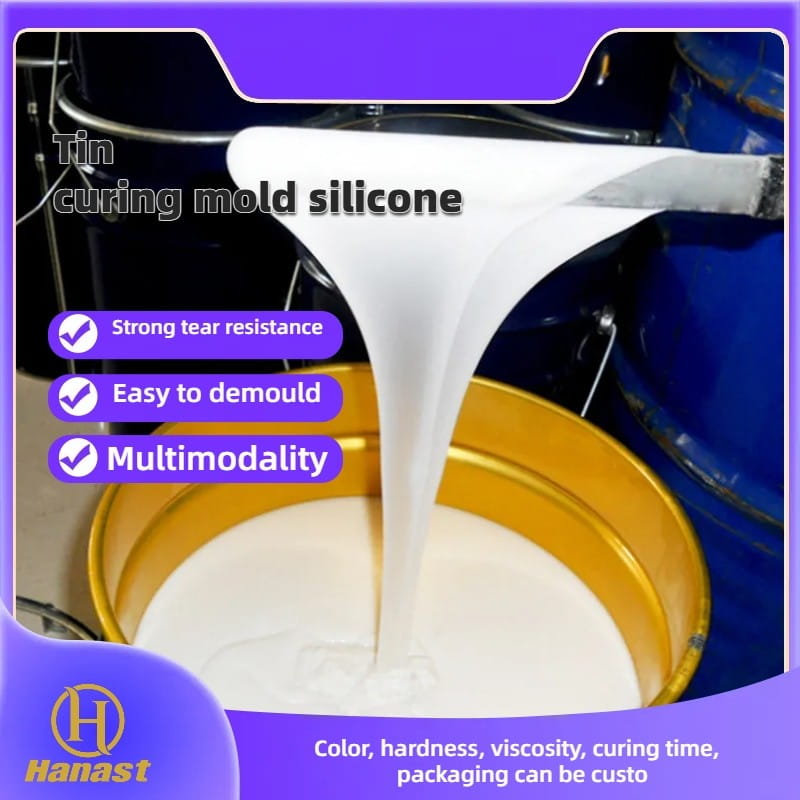The root cause of the low frequency of mold silicone flipping
 Jul 15,2023
Jul 15,2023

 Hanast
Hanast
The environmentally friendly and resilient properties of tin cured mold silicone are preferred as the ideal material for flipping/opening/re molding, mainly used for crafts, ABS materials, gypsum lines, cement products, and other flipping. However, sometimes we may encounter the phenomenon of low flipping times. Below, we will explore the root cause and solution of the low flipping times of liquid mold silicone with HANAST silicone tape.
There are many factors that affect the number of times silicone molds are flipped, including product materials, the purity of raw materials used by customers during production, mold size, and complexity, all of which can lead to different flipping times.
Reason 1:
During the process of making the mold, too much silicone oil was added, which damaged the molecular weight of the silicone, resulting in the mold being less frequently flipped and less durable. Therefore, it is not allowed to add too much silicone oil, especially white mineral oil, as it will damage the molecular weight of silicone and affect its tear resistance.
Reason 2:
Is the product pattern simple or complex? For complex patterns, it is necessary to spray a release agent.
Reason 3:
Do you add fiberglass cloth to large products, and the proportion of curing agent is too high.
Reason 4:
Has there been any vacuum treatment? The liquid silicone is viscous and requires vacuum treatment to make a silicone mold without pores.
Reason 5:
The produced mold needs to wait until it is fully cured before being put into production 24 hours later. If the liquid adhesive is not fully cured, it will demould prematurely, and the silicone rubber performance may not improve, resulting in low tensile and tear properties.
Reason 6:
The temperature of different materials used for injection is 6-70 ℃ for unsaturated resin materials, and 100 ℃ for epoxy resin and polyurethane resin, which has a significant impact on the mold turnover.




 Home
Home

 Can we use condensed silicone molds for cement decorations
Can we use condensed silicone molds for cement decorations  You May Also Like
You May Also Like







 Tel
Tel
 Email
Email
 Address
Address












